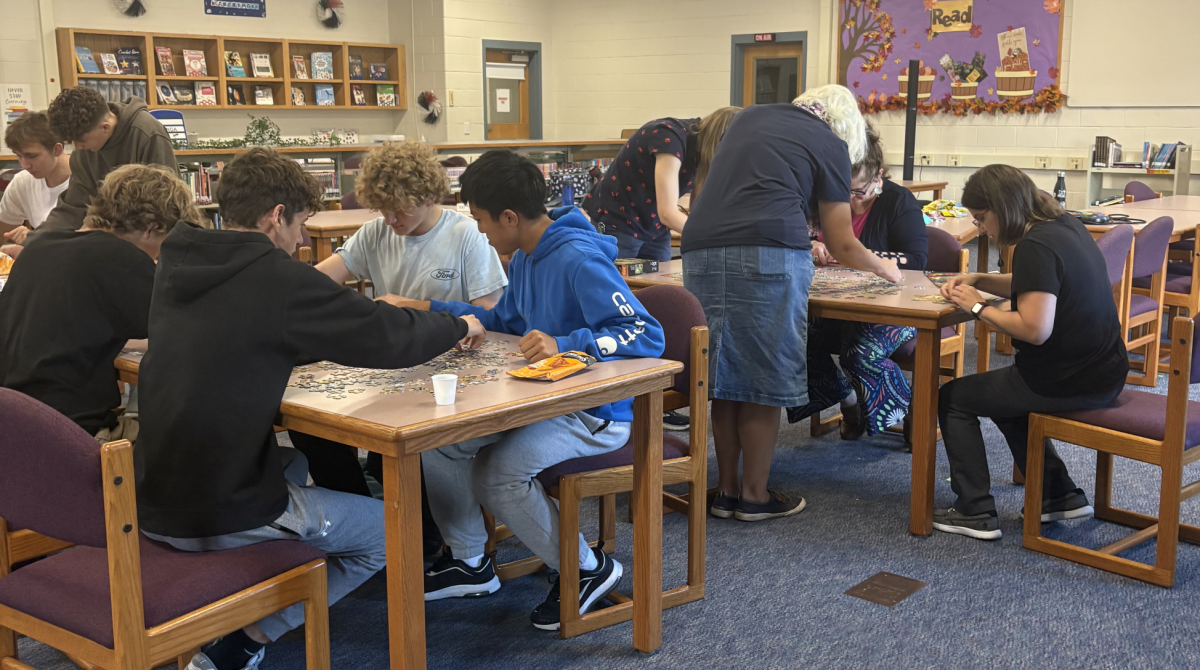Category 4 Hurricane Helene’s destruction this past weekend has resulted in catastrophic damage. As of Friday, October 4, NBC is reporting that at least 220 people are dead, hundreds are still missing, and hundreds of thousands are still without power and dealing with spotty communication services.
As reported by CNN, Helene has destroyed 500 miles of the US, traveling up through Florida and hitting states like North and South Carolina hard. Fast moving floods and heavy winds have destroyed homes, roads and lives.
Kim Jameson lives in Tega Cay, South Carolina, near Asheland, one of the hardest hit places from the winds and rain.
When Jameson and her family first got news of the weather, she said they weren’t worried. The hurricane made landfall on Thursday, Sept. 26.
“We didn’t think too much of it,” she said. “We just thought there was going to be a lot of rain and some wind.”
Her husband, Brad Jameson, left to go camping with friends in Fletcher, South Carolina just south of Asheville on Thursday. On Saturday, all communication was lost. Kim and two other women went to find them. On their journey, they came across all that had been destroyed.
“It was really heartbreaking to see just people’s homes completely destroyed and roads completely gone,” Kim Jameson said.
Later, she mentioned that Fletcher, South Carolina was one of the better faring places that had been hit in comparison to other cities. Asheville alone had at least 40 deaths according to AP News.
“This [hurricane was] worse than usual just because as the earth is heating, the extra heat is adding extra energy,” said Jeffery Bakunas, environmental science teacher at Hayes.
Global warming may make powerful, long lasting storms a more common disaster. More energy means stronger winds and powerful destruction
“This is going to become our new normal,” Bakunas said. “Areas that are really far inland are going to be hit a lot more often… [due] to the global climate change.”
FEMA and other organizations, including the U.S. military, are working to deliver supplies and bring people to safety. However, there is still much to be done.
“I don’t think anybody actually was really prepared for it,” Jameson said. “I don’t think they thought that the hurricane would maintain its strength as it traveled inland and up into the mountain region.”
Jameson explained that some of the water was flooding down the mountains nearby. To combat this, her city opened up dams, causing the lake she lives near to be filled with debris from the floods.
Bakunas said that although the storm is gone, the damage Helene left behind will last for a long time.
“[Cleanup] will probably take years,” Bakunas said. “We’ve got a whole bunch of polluted water. Chemical tanks broken during [the hurricane can] poison certain areas. We’re gonna see a whole lot of health effects. The actual death toll could be in the thousands once we count up all the residual effects.”
Jameson ended up finding her husband and their family is now safe. However, many people are still separated from each other due to the storm, and achieving communication with others may take time due to the power lost from the hurricane.
“I just think we can’t take anything for granted, right?” Jameson said. “We have to just be constantly[…appreciative of our family that we have and [that] people are safe and healthy, because that’s not the case for a lot of people that live in the mountains right now or who have family there who still can’t get in contact with them.”
If you would like to help, FEMA recommends visiting the National Voluntary Organizations Active in Disaster to find resources.
This story was originally published on Hayes Talisman on October 4, 2024.










![Senior Dhiya Prasanna examines a bottle of Tylenol. Prasanna has observed data in science labs and in real life. “[I] advise the public not to just look or search for information that supports your argument, but search for information that doesn't support it,” Prasanna said.](https://bestofsno.com/wp-content/uploads/2025/10/DSC_0073-2-1200x800.jpg)


























